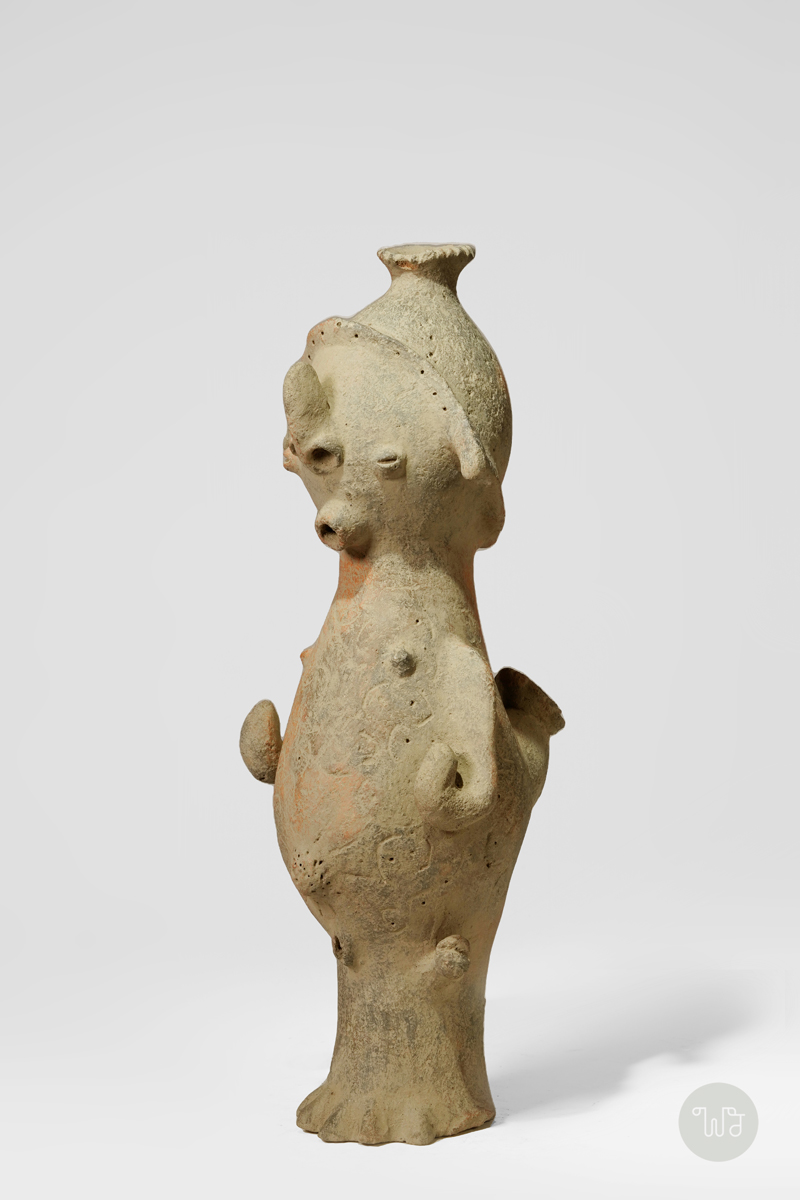|
An Adamawa Kwandalha healing sculpture, also called Longuda, according to the language, Estern Nigeria, close to the Benue river. "After a ritual specialist determined the cause of a disease, the patient was given a newly modeled vessel, into which the disease was transferred. Such pots, which tend to embody the symptoms described, are remarkable for their highly expressive and imaginative forms." Source Brooklyn Museum, Vessel for Kwandalha Divination. "The art of manufacturing and the knowledge of its use are reserved for only a few old people today; the young generation, brought up by missionaries, often no longer even know of their existence", Karl-Ferdinand Schaedler, Erde und Erz, S. 271. The object takes on a variety of zoomorphic and anthropomorphic themes and forms and shows considerable technical mastery in its execution. The sculptures are not archaeological, but were used in the 18th to 19th centuries for ritual/healing purposes. Lit.: Karl-Ferdinand Schaedler, Erde und Erz. 2500 Jahre Afrikanische Kunst aus Terrakotta und Metall, 1979. sold Height: 48 cm |
 photo: wolfgang-jaenicke.com, for more information, please write us an e-mail with the identification number of the photo identification no. _BBD040766.jpg |